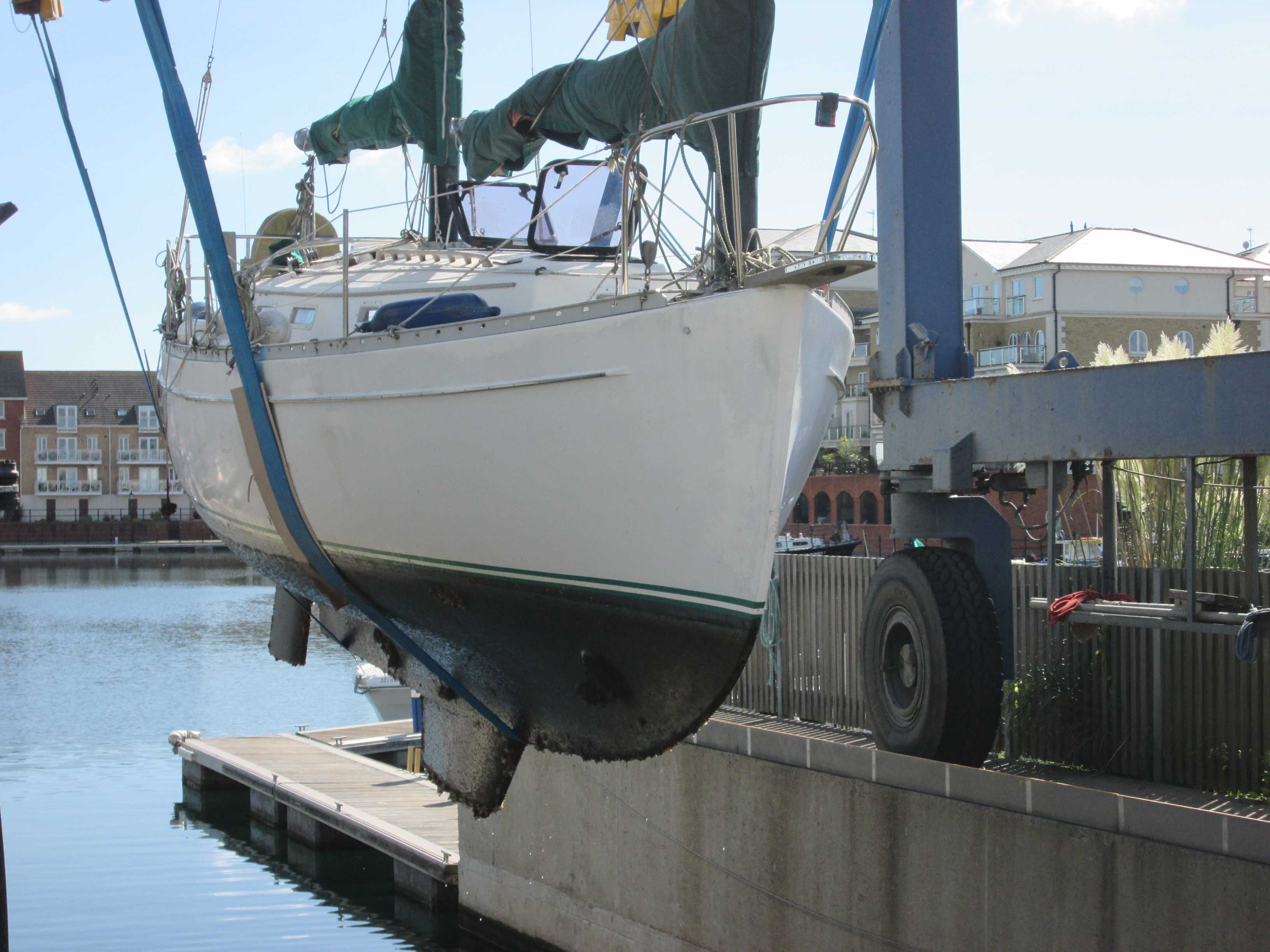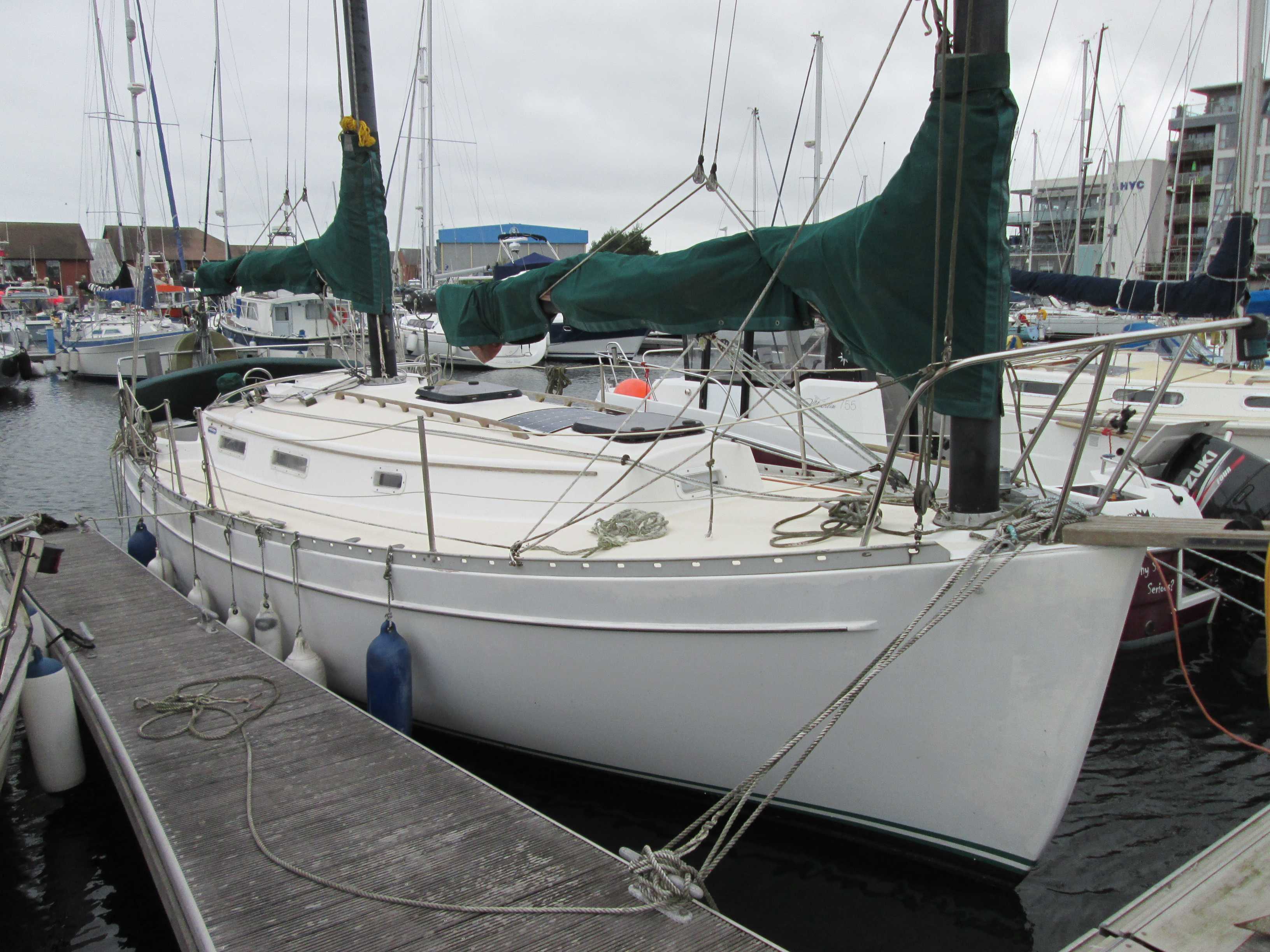
Freedom 28 in the lifting slings at Premier Marina, Eastbourne, England
The Freedom 28 sailing yacht was built by Tillotson-Pearson of Rhode Island, USA. The free-standing ketch rig is comprised of two unstayed masts, made of carbon fibre. On this version the booms were of the more usual extruded aluminium, connected to the mast via goosenecks that are bonded to the carbon fibre masts. This rig is lower in maintenance that the usual stayed masts, with no expensive wires to replace. The sail plan is easy to handle and reasonably efficient, but with the long keel, she may not sail to windward as well as many fin-keeled yachts of similar size. This version had the shoal keel option, with a lead centre plate.
This Freedom 28 sailing yacht was recently surveyed at the Sovereign Harbour Marina, Eastbourne, England. The hull of the Freedom is of sandwich construction, with an end-grain balsa wood layer sandwiched between the inner and outer layers of GRP. The balsa core is present both above and below the waterline, but only extends downwards as far as the side of the keel. The Builder sensibly ensured that any skin fittings were only located in regions that were free of any balsa core material, ensuring that no water can enter the core via the cut-outs of the skin fittings. One of the most important areas where the surveyor has to take great care is to look for any additional skin fittings or anode studs that might have subsequently been fastened through the hull: If these were cut straight through the balsa core, there is a significant risk that moisture might penetrate the balsa, resulting in a rotten core. This can lead to a significant loss of strength & stiffness in the hull and the cost of rectifying this can be very significant.

On this Freedom 28, the Masts were carbon fibre and the booms were made from aluminium


41 Responses